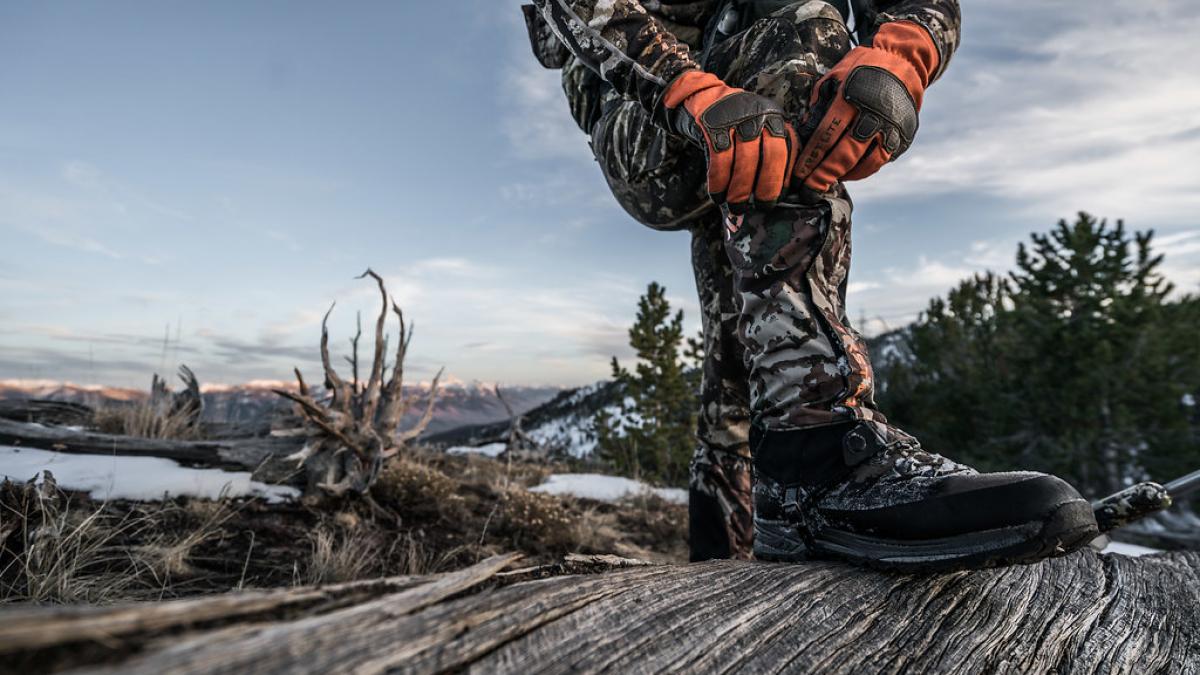
Hunting Boots 101-Finding the Perfect Hiking Boots for Hunting
By Brad Brooks
There is one thing I want to get out of the way up front: there is no such thing as a backcountry hunting boot that is ideal for every season and every hunt, nor is there one brand or one boot that is better than all others. All boots have features that make them ideal for different uses, and there are trade-offs no matter what boot you use, or what style you use. There are good boots, and bad boots; quality brands, and crap brands, but no one perfect brand or boot.
It is also true that finding the right boot based on the morass of options and marketing lingo leaves most people’s head spinning in confusion. Leather or synthetic. Heavy or light. Waterproof or not. Tall shafted or ankle height. Insulated or non-insulated. You get the point.
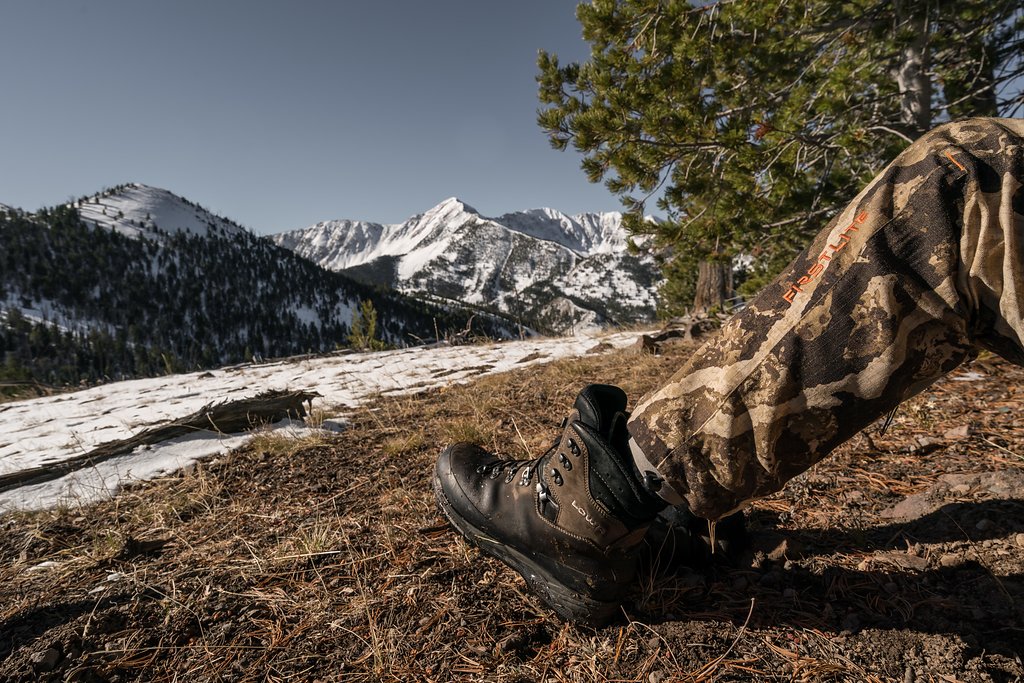
Add to the confusion the latest trend in the hunting world towards minimalist hunting shoes and boots, and a lot of hunters are struggling to find the right boot, and know how to differentiate one boot from another based on anything other than price and arm-chair opinions.
This series of articles on hiking and hunting boots started out as a single piece, but it quickly became apparent I needed to break this topic up into bite-sized chunks due to my long-winded nature and opinions on the subject. I started out wanting to answer some of the most common questions we receive about what the “best hunting boot” is, or what boots people should wear, and it evolved into three separate articles.
For many years, my approach to boot selection was to buy a pair of boots, wear them extensively, and decide if I liked the way they performed. That method is fine, but I spent a lot of money doing it, and didn't learn much other than realizing good boots are expensive. What I didn't learn is why they worked, and how I could apply the traits I liked from those boots to buying other boots in the future.
In this series, we cover a lot of ground related to hunting and hiking boots, and how to go about picking the best boot for you. All of the articles are linked below, but we start with the general rules of boot selection, delve into what makes a good boot, and work our way towards the more hotly debated topics in the hunting boot world (the stuff hunting forums can debate for years).
I’m also going to cover the recent trend towards using running shoes for hunting, which is not all that different than the trend in the running world a few years ago towards using leather sandals like the native American runners from rural Mexico were using. That fad has since gone extinct, and for good reason, which I’ll elaborate on later.
I’d recommend at least skimming the first article, but pick an article below that suits your fancy and as always, I’d love to hear your comments and questions, particularly if I got something wrong or you disagree with something I wrote.
But first, I'm going to cover some of the basics of what any hunter should consider when selecting a hunting boot.
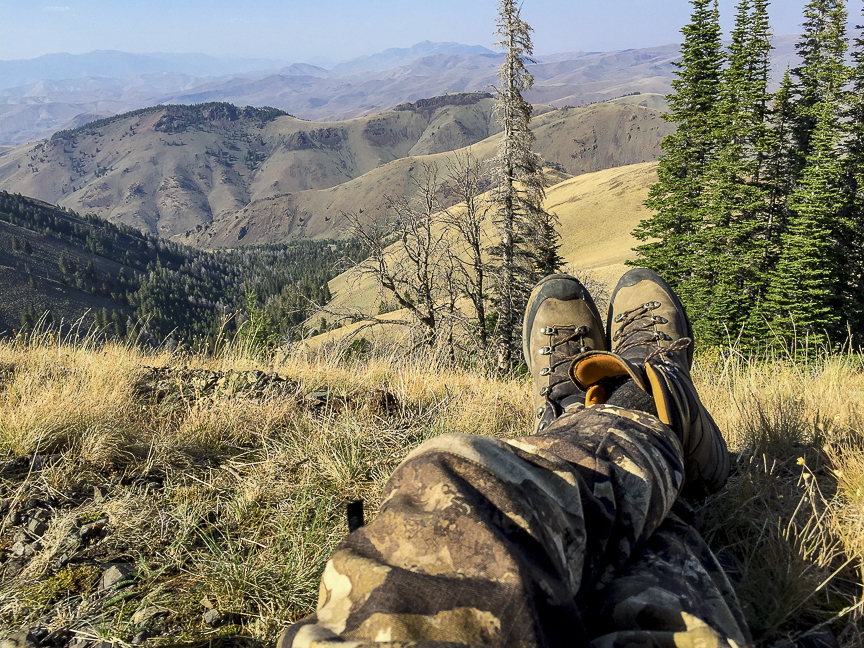
Features to Consider in picking a Boot
Whether you are just now looking to purchase a quality pair of hunting boots, or you've been buying good boots for years, there are some basic considerations that can help you narrow down your decisions up front.
Waterproof Vs. Non-Waterproof Hunting Boots
A waterproof boot sounds like something you would always want when hunting, but that's not necessarily the case.
A waterproof boot is (obviously) designed to keep your feet dry in wet conditions. And when conditions are wet or snowy, a good quality waterproof boot is always what I would wear.
There are a couple of other advantages to consider. Waterproof boots keep the dust and dirt from seeping in through the top of your shoe or boot, and if you walk in a place that has fine grain sandy soils, that particulate matter can get into your boot or shoe. A waterproof liner on a boot will prevent material from getting through your boot and help keep debris out of your boots. This issue is mostly a problem with boots made of synthetic uppers.
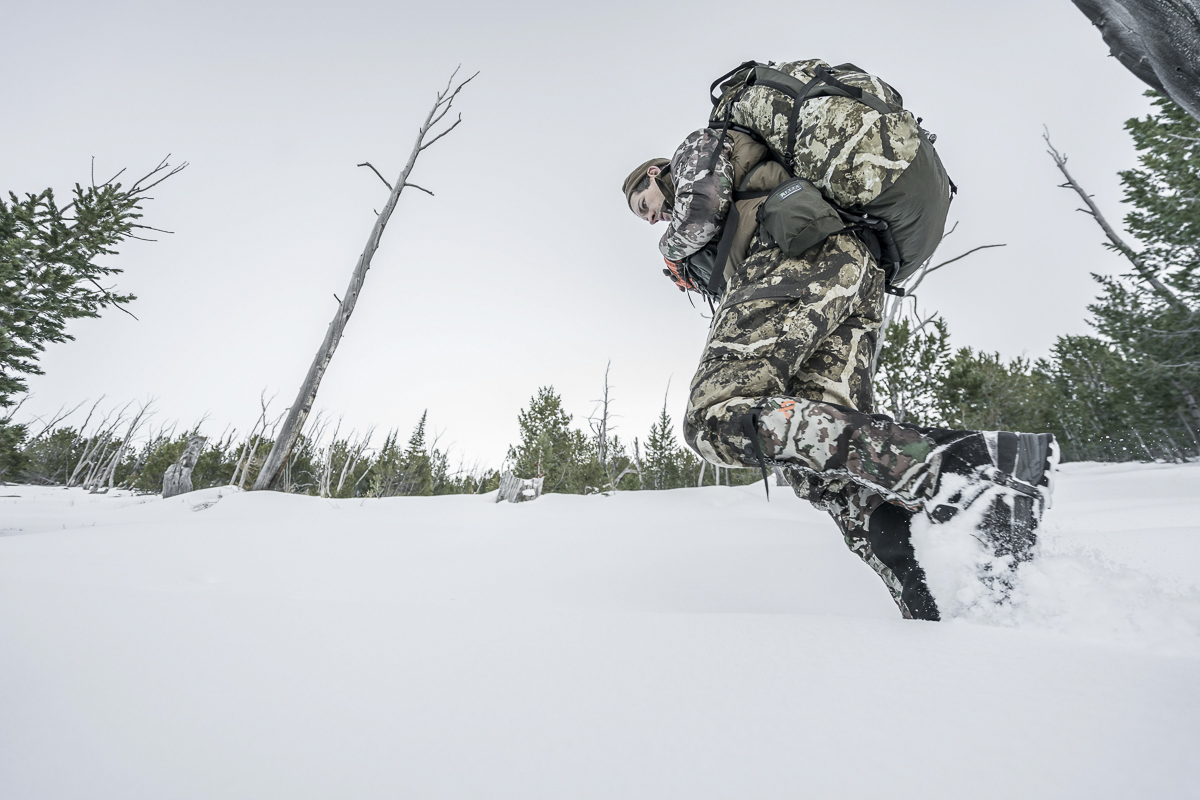
A waterproof lined boot is great for mid and late-season (October 1st or later) hunting if you are trudging through snowy or wet conditions all day. I tend to use waterproof lined boots for most of the year, but I know a lot of people that can't stand them because their feet sweat excessively during early archery season hunts.
A non-waterproof shoe or boot, especially if it is made of synthetic material that is porous, will allow your feet to breath and help keep them dry in dry, warm conditions. The downside to the breathability, particularly with a synthetic shoe or boot that is made from porous material, is that dirt can get into your shoe and sock. That might not be an issue for some people, but having dirt in between your toes is annoying if you're hiking long miles.
Another significant upside to a non-waterpoof boot is weight. A waterproof liner is going to add a considerable amount of weight to each shoe or boot, which as I will get into in my article on lightweight hunting boots, can cause noticeably more fatigue.
If a boot claims to be waterproof and breathable, there is likely some truth to it, but I've never worn a waterproof boot that didn't result in sweaty feet while hiking. A truly breathable waterproof boot is not something you can count on, and companies are using the term "breathable" pretty damn loosely. Particularly in the early season, the lack of breathability is going to result in your feet sweating and getting clammy, which in turn can lead to more blisters if you aren't careful.
And if I'm being honest, even the best of waterproof boots will leak over time. I have worn a lot of the top boot brands, and all of them have leaked over time. A waterproof liner will keep most of the moisture out of your boot, and it can be hard to know if the moisture that ends up in your boot is from foot sweat or moisture leaking through. But, expect that any good quality waterproof boot will allow some moisture into your boot if you are trudging through wet, snowy conditions all day.
To recap: if your feet sweat a lot, causing blister issues, consider using a non-waterproof shoe or boot during early archery seasons. As the season progresses and moisture and or snow hit the ground, a waterproof boot is the way to go for most people.

Synthetic vs. Leather Material
The material of a boot impacts the cost, the functionality and the durability of the shoe, but there isn't any reason to think leather or synthetic material is better than the other for backcountry hunting or hiking. Some of the reasons for choosing either a synthetic or leather hunting boot are based on personal biases towards or away from a material, but I’m going to approach this from a functionality angle, not a preference for a specific type of material.
Leather has been the material of choice for boots since the inception of footwear due largely to its durability and availability. In Daniel Boone's era, whitetail deer leather was the material of choice for footwear and clothing. Thankfully we've evolved our clothing options. Premium hand-crafted boot companies have been using leather to make boots for decades, and there are still many situations where leather is a preferred material over synthetic material for boots.
A quality leather boot can form to your foot over time, giving it a glove-like fit. For many people, the malleability of leather is one of the primary reasons to choose it over synthetics. Leather is also a durable material that can take a lot of abuse from rocks, trees and other hard objects your feet invariably touch while walking in the mountains. A good pair of leather boots that are properly cared for can live for many years and oftentimes can be re-soled to last a long time.
Leather can also absorb material well, and over the life of a pair of leather boots, waterproofing shoe treatment allows you to keep an older pair of leather boots semi-water resistant over time (I use “water-resistant” instead of waterproof because I have yet to find any pair of boots that claims to be waterproof, that are actually waterproof).
Leather can also be incredibly durable. Rarely are a pair of leather boots retired because the leather wears down. The sole of your boots, the rubber rand and the non-leather part of the boot are much more likely to break down before the leather uppers, which makes re-soling an option.
Shoes made of synthetic upper material are less prone to stretching and molding over your feet, but there can be significant advantages for backcountry hunters. First, synthetic materials are usually lighter than leather, making an equivalent boot made out of synthetic material a fair bit lighter than a pair of leather boots. Synthetic materials can also breath better than leather (although it depends on the material).
Boot and shoe companies like to claim that there is such a thing as a breathable leather boot, but they are talking about breathing in a different way than I imagine breathing happening. Leather boots will cause your feet to sweat, period. Synthetic materials can also cause a significant amount of foot sweat, but my experience has been they breathe much better.
Technological advances have also allowed synthetic materials to catch up to leather when it comes to durability. You’ll notice modern mountaineering boots aren’t made of leather. While you can’t rehabilitate a synthetic upper material with beeswax like you can on a leather boot, a synthetic upper material can last just as long as a leather boot, or longer.
There is no right answer for what material makes for a better backcountry hunting boot. Price, foot sweat and personal preference will all need to be factored in to find what material you prefer.
I have boots with both materials, and early season I prefer a synthetic, breathable material, and late season I tend to gravitate towards a mostly leather upper boot with a waterproof liner. But that’s just me.
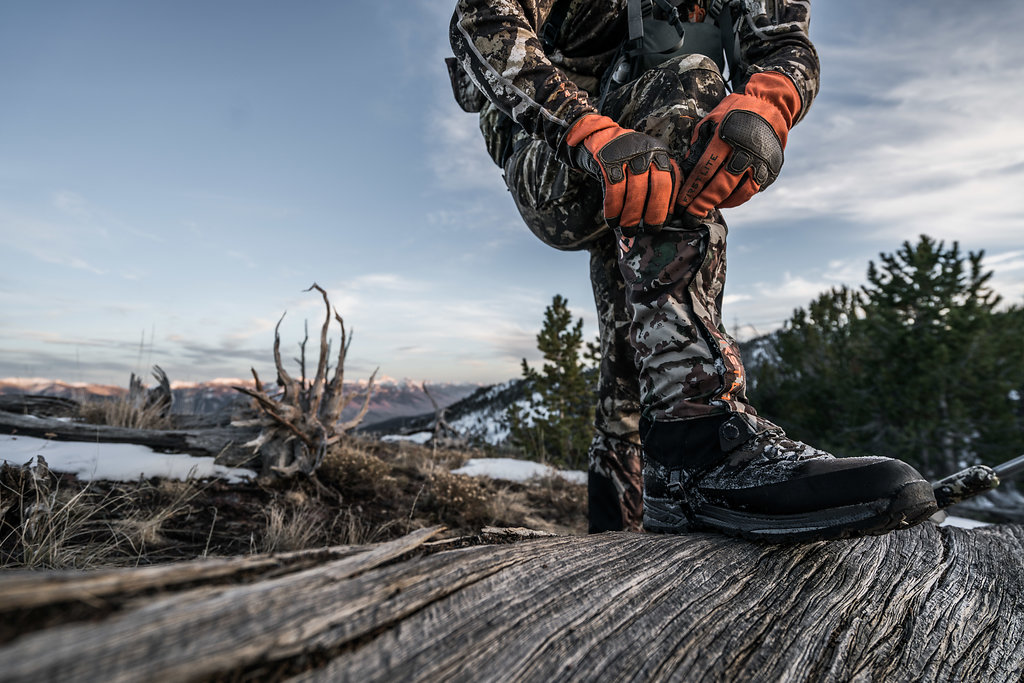
Insulated vs. non insulated boots
For western backcountry hunting, people tend to overestimate the value of an insulated boot for anything other than late season hunts, and underestimate how wet your feet will get from sweat even when it is cold outside. Insulated boots definitely have their purpose and place, but it is important to think about where you will be hunting and how much walking you will be doing versus sitting.
Foot sweat and circulation is different for everyone, so some people can wear an insulated boot on hunts where my feet would be completely swamped. Even with an uninsulated boot, hiking in mountainous terrain will get your blood pumping and your feet warm fairly quick. By throwing some insulation in your boot, you are adding a micro puffy down jacket around your feet. So think about whether the temperature level and your exertion level warrant putting a down jacket around your feet.
For me, an insulated boot for mountain hunting is almost never a good idea, even in the late season. Even if I'm trudging through snow, an insulated boot causes my feet to sweat too much when I'm hiking. And then when I stop to glass, that moisture causes my feet to turn cold rather quickly. My feet seem to get cold a lot easier than they used to, probably due to minor frost bite and perennial neglect from years of abuse, but even I won’t wear an insulate boot unless the temps are really low and I’m not planning to walk around much.
There are situations where having an insulated boot is ideal, especially with tree stand hunting, or when it is brutally cold. I'd also say that everyone's feet are going to sweat differently, and if foot sweat isn't an issue for you, a lightly insulated boot could be a great option.
Soft Vs. Stiff Mid-Sole Boots
All shoes and boots are made to be somewhere on the spectrum from soft to stiff soled. Most hunting boots are either mid-stiff, or stiff. The stiffness of a boot is controlled by inserting a shank, literally just a hard piece of material, in the mid-sole of the boot. That shank sits between the outer sole of a boot and the footbed, and it controls how much your boot will be able to flex. Remember that the mid-sole is not to be confused with the outer-sole, which is the part of the boot that contacts that ground.
There are reasons for wanting a boot that has a soft, medium or stiff shank in it. Generally, a softer shank is what you would want if you like having greater foot control. A soft mid-sole is also going to be quieter when walking in the woods and is preferred when trying to stalk in on a animal.
A soft shank is also going to be comfortable to walk around in so long as you don't have a significant amount of weight on your back. Running shoes made with air-blown EVA foam have a soft, cushioning feel to them which is made to absorb shock when running. However, that soft feel is also what makes them fairly useless with weight on your back.
A stiff-shanked boot such as the Lowa Tibet GTX, is designed to provide support to your foot and arch when walking in rough, uneven terrain. This is particularly valuable after multiple days of off-trail hiking involving side-hilling. With a soft mid-sole boot, your foot will flex a lot more and cause your feet to fatigue quickly, which in turn will make you more fatigued. Unless you spent a lot of time conditioning your feet from hunting in soft-soled shoes or doing long trail runs, a boot with some mid-sole support is a good idea.
The vast majority of mountaineering-style boots and high-end hunting boots have stiff mid-sole to protect your feet from rough terrain, although a lot of hunters are starting to use mid-stiff or even soft mid-sole boots. For more on the merits of lighter vs. heavier boots, check out our article on running shoes vs. hiking boots for hunting.
Boot Weight
I won't dwell on this topic here since I go into great length on the topic in a separate article on running shoes vs. hiking boots for hunting, and in our piece on the 4 principles of hunting boot selection, but how much your boots weigh is something to pay attention to. Heavy boots will slow you down more, but there could be valid reasons for wanting a burly boot that weighs a little more.
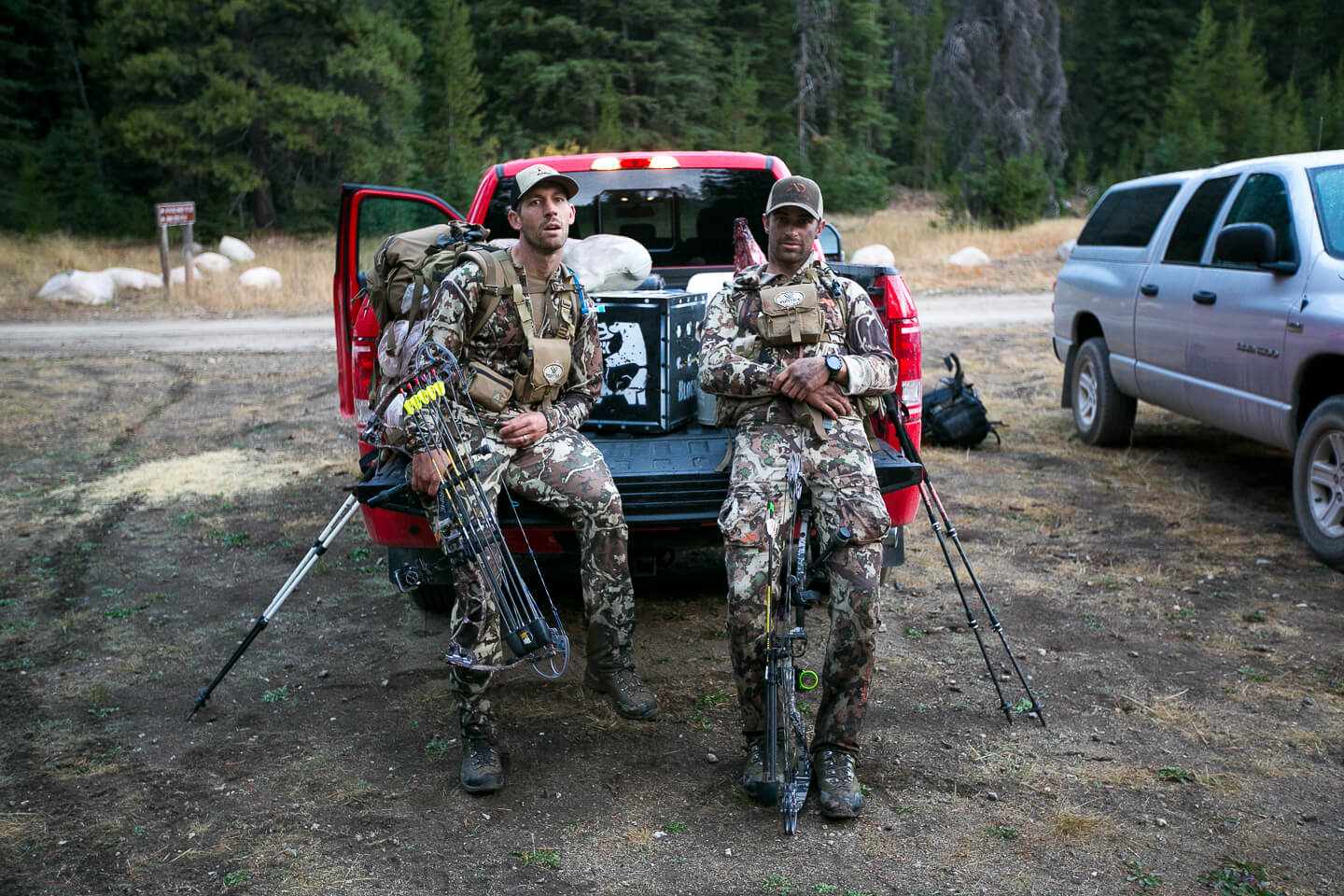
Tall, Medium or Low Shaft
For many years the height, or shaft, of the standard hunting boot was tall and came up to your calf. For someone that wants the ankle support and stability of a tall shafted boot, this can be a great option. It will also help keep snow and other debris out of your boot when you are tromping around the mountains. However, a tall shafted boot is going to add some weight to your boot, and for some people is unnecessary.
Most hiking boots are going to be mid-height boots and come up around ankle height. Mid-height boots are pretty much all I use these days because I don't need extra ankle support. And when paired with a pair of gaiters later in the year, you don't have to worry about snow getting in your boots no matter how deep.
A low top shoe is going to be your lightest weight option. This is mostly a category reserved for people that are wearing running shoes in the mountains, but the reduced weight makes low tops an attractive option. If you are going to use a low-top shoe, it is worth also wearing them with a pair of lightweight gaiters to keep the dust and debris out of your shoes.
Putting it All Together: Picking the Right Boot
If you take the topics we've discussed so far, hopefully they will help you narrow down your boot options. If you're still not sure what to make of all this, check out the other two companion articles to this piece on the Four principles of hunting boot selection, and running shoes vs. hiking boots for hunting.
To recap, figure out the features you want in a boot before you start looking at brands and models. After you've done that, then start looking at what boots to get. For what it's worth, here are three boots that I use from early August mule deer or antelope, through late December hunting in order from early to late season:
- Scarpa Zodiak GTX Plus. Great lightweight early season boot with an EVA midsole so it is incredibly quiet to sneak around in the woods with.
- Crispi Lapponia III. Another great lightweight, archery season boots. Perfect for warmer weather hunting.
- Schnees Beartooth 400g Insulated Boot. I've worn the Beartooths on so many hunts I've lost count, and the insulated Beartooth is my go-to for late season hunts.